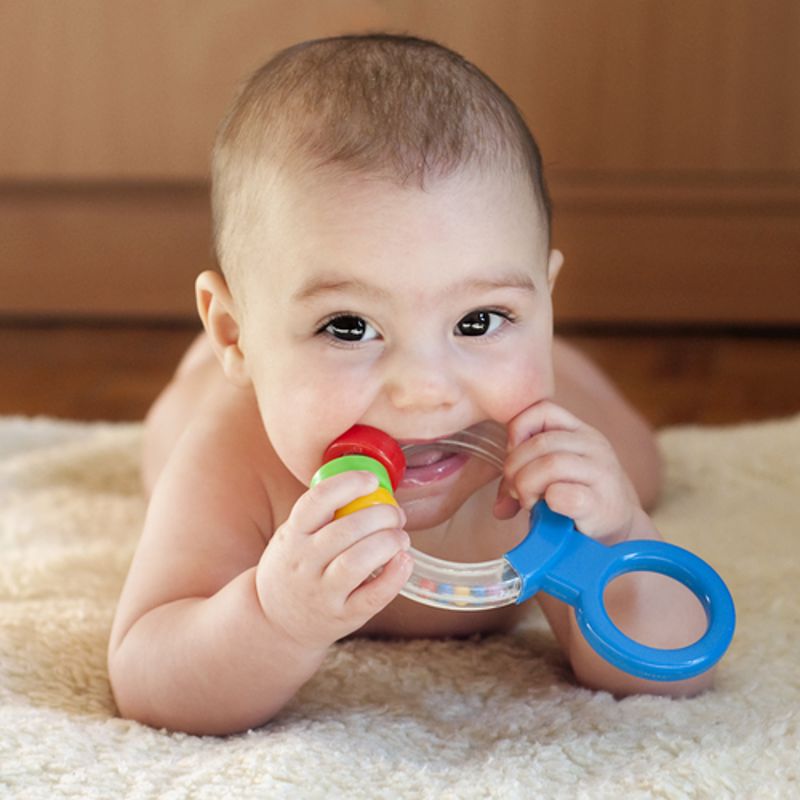There are a whole lot of "firsts" when you become a parent, and as a mom, dad or legal guardian — whether it's your firstborn or your fifth adopted child — you want to document all of them. Whether it's their first step, first word, first Christmas or first solid food, there are lots of formative moments in the early life of a child. But there's another stage that doesn't get quite the same kind of recognition as the others: your baby's first teeth. While they eventually grow up to have 32 teeth, in their introductory years, they start out with only around 20, a total they typically reach by age 3.
But if you're the parent of a newborn baby, plan to become pregnant or you're nearing the all-important nine-month mark, you may wonder which of your baby's baby teeth will be the ones to form first — or at least appear from their gums. Here's what you can expect:
Incisors
Generally speaking, the incisors are the first teeth that poke their way through your baby's gumline. The incisors are the teeth at the very front of the mouth, making it rather appropriate that they're the teeth that kick things off. You should see your child's incisors by the time they turn around 6 months of age, but it may be a bit longer than that, potentially as long as 10 months. Also, it's generally the bottom incisors that form first, followed by the top ones sometime between their 8th and 12th month of life. This is all for the central incisors. The lateral incisors — which flank the four in the middle when you count the top and bottom — should make their appearance as early as 9 months and as late as 16 months.
Molars
When it comes to chewing — the primary purpose of the teeth — the molars are the workhorses. Found in the back of the mouth, molars do most of the grinding and gnashing so foods are easier to swallow and digest. As far as when you'll see them, the first molars should come out after your child turns 1, or once they're between 13 and 19 months old. The bottom first molars should follow suit in short order, potentially as soon as they're 14 months old.
As for the second molars, those are usually — but not always — the very last ones to erupt. Those come when they're around 2 to 2 ½ years old. But in contrast to the first molars, the first of the second molars form on the bottom.

Canines
The canines may be the most identifiable of the teeth, given they're pointed, more jagged appearance relative to the more square-shaped canines and incisors. In terms of when they take shape, the canine teeth also erupt after the central and lateral incisors do but before the first and second molars. Thus, the top canines emerge at around your baby's 16-month mark but it could also be near to their 2nd birthday.
How long is too long?
Your child's teeth timeline may vary; there are exceptions in which some teeth may form more quickly — or later — than others. More important than anything is ensuring that they form in the first place and there is appropriate spacing between them when they do. If you have any questions about why some may have not yet erupted or none of them have developed yet, don't hesitate to reach out to your primary care physician or your dental health professional. They'll be able to provide the guidance that is specific to your child's developmental needs when it comes to oral care.
If you have questions about your child's teeth or are wondering what the best age for them is to schedule regular cleanings, please contact us at City Dentists. We look forward to hearing from you.